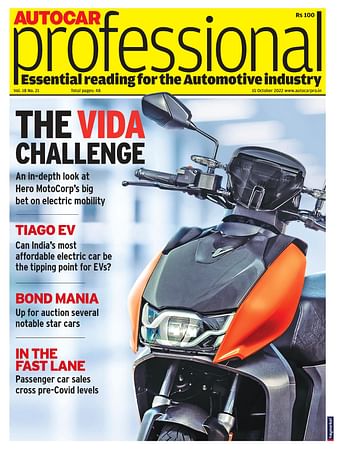Bosch develops new Combiner head-up display
Bosch has developed a combiner head-up display that presents key information –information on speed, navigation recommendations or warning – directly in front of the driver.
Bosch has developed a combiner head-up display that presents key information –information on speed, navigation recommendations or warning – directly in front of the driver. The product, offering the highest image quality and precision, is used in various vehicles of the BMW Group. Initially available for the new Mini hatchback, the head-up display is characterised among other things by a full-colour presentation, and can be integrated completely into the instrument panel.
"The driver does not need to constantly switch between the view of the instrument panel and the view of the traffic," says Manfred Baden, chairman of the Management Board Car Multimedia at Bosch.
The new system belongs to the class of ‘Combiner Head-up displays’. The system information is not reflected in the windshield but is projected in front of a small special plastic sheet. The new head-up system operates independently and without major technical changes in various types of vehicles. For the passenger, the display is not visible.
Importantly, the information stays sharp and undistorted, the result of an elaborate optical unit of all elements. One of the technical highlights is the ‘combiner’ plastic disc, aspherical shaped as a magnifying mirror. Tolerance in the front surface is very tightly specified. The edge of the plastic disc is milled in the view of the driver escape.
The new head-up display is a complete module, which is fully integrated into the instrument panel. The combiner plastic disc drives out of the box, if necessary, driven by an electric motor with adjustable speed. If the system is turned off, the disc goes all the way into the box.
The new display consists of an imaging unit with a full-colour LCD (with 480 x 240 pixel resolution). Similar to a slide, it is illuminated by a light emitting diode with high light intensity. The light signal is fed inside the box on the folding mirror imaging unit with the combiner disc as a central component. These project the image into the so-called ‘Eye Box’ – the area where the driver's eyes are. The brightness of the information presented can be customised via sensors or dimming wheel.
RELATED ARTICLES
Sept 2024 From R&D incentives to EV infrastructure: What auto components industry expects from Budget 2024
Sept 2024 From R&D incentives to EV infrastructure: What auto components industry expects from Budget 2024
US car majors hit the brakes on driverless cars
Ford Motor and Volkswagen to close self-driving startup Argo AI, due to lack of technology and clear regulations.
Autoliv and Geely to develop advanced safety tech for future vehicles
Scope of cooperation includes safety for high-level autonomous driving, intelligent steering wheel technology, a 360deg ...






 12 Jun 2014
12 Jun 2014
 8124 Views
8124 Views





 Autocar Pro News Desk
Autocar Pro News Desk




